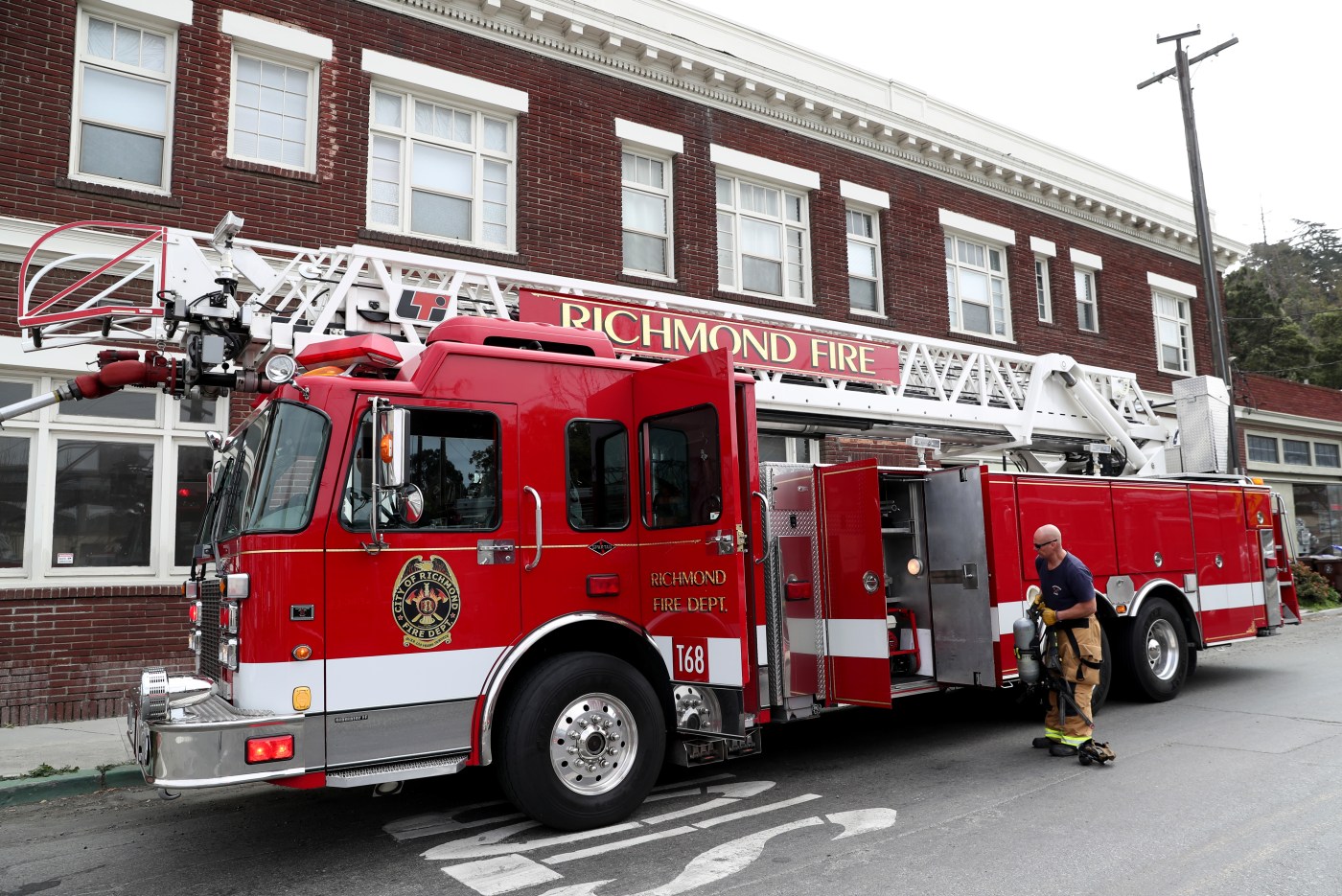
RICHMOND — Two decades after Richmond firefighters first started pushing for the city to upgrade its emergency response capabilities, councilmembers signaled their support for establishing a paramedics program that will enable the department to provide advanced emergency life-saving care.
Currently, the Richmond Fire Department is the only fire agency in Contra Costa County not permitted to provide advanced life support care when sent out on emergency calls. That means the city’s firefighters, all of whom are certified emergency medical technicians, can only administer basic levels of care like CPR, semi-auto defibrillation, basic airway management, medical assessments, blood sugar testing and basic trauma treatments.
Related Articles
California dad dies after car goes over embankment during driving lesson with teenage daughter
12 injured when tree falls during Diablo Valley College graduation ceremony
Man convicted of starting 44,000-acre Line wildfire in Southern California
Man accused of swinging sledgehammer, threatening hikers in California park
Pittsburg to overhaul policies curbing underage consumption of tobacco, alcohol and cannabis
Under a new initiative, Richmond Fire Chief Aaron Osorio plans to align the department with the seven others in the county currently allowed to provide advanced life support. That will require the department to triple the number of paramedics currently on staff who are qualified to administer higher levels of care like EKG monitoring, cardiac pacing, manual defibrillation, pain management and advanced airway management, trauma and medical treatments.
Paramedics would also be allowed to administer about 20 additional medications and start IVs, which cannot be done by an emergency medical technician who can administer things like oxygen, Narcan, oral aspirin and epinephrine.
The transition would be a critical step for a department that responded to 15,150 calls last year, about 58% of which were emergency medical service related, Osorio said. Calls for service have also grown by between 3-4% annually since the start of the COVID-19 pandemic, he said.
“That (advances life support) scope of practice offers a lot more treatment options for the patients,” Osorio said. “Really, what it equates out to is survival rate.”
It will likely take at least five years before the program is fully operational, Osorio said.
The pool of paramedics is shallow and the department currently only has the capacity to train about seven to 12 people at once. Ten firefighters already employed with the department are paramedics but some are in leadership positions and may not want to return to in-field care. Those who do will still need some retraining, said Osorio, who presented the matter during a City Council meeting Tuesday.
Due to those challenges, Osorio suggested the city first begin establishing four quick response emergency services squads at the busiest fire stations. Those squads would be staffed with two paramedics not trained as firefighters who’d respond to emergencies in a quick response vehicle.
Eventually, at least one paramedic would also be staffed on a fire engine alongside three firefighters, creating what Osorio referred to as a hybrid of the two squad and engine delivery advanced life support models. At least 30 paramedics will be needed in the department to fully staff the program.
The ultimate goal, Osorio said, would be for all firefighters employed in the city to be paramedic certified but an immediate transition to that standard isn’t currently feasible.
“Although this is a very complex program that would take years to implement, this would be the most significant increase in services from the fire department in the last 40 years,” Osorio said.
The initial cost of starting up the program is about $4.4 million, with about $3.7 million going toward training, $319,400 toward equipment and supplies, $225,000 toward purchasing three quick response vehicles and $197,680 toward an emergency response services supervisor salary and benefits. Costs would be expected to increase by about $610,000 annually to cover supplies and equipment replenishment, salary increases and vehicle replacement costs.
Exact funding sources for the program are still unclear. Osorio said the group of executive fire chiefs in Contra Costa County will likely support a request for funding under Measure X, a county-wide half cent sales tax, but the Board of Supervisors would have the final say.
Additional potential funding solutions could include a new city-wide tax, billing non-residents who use the new emergency service since they don’t pay into the system, or charging everyone who uses the service an emergency response fee and billing insurance providers, Osorio said.
Heeding the chief’s advice, councilmembers voted 6-0, with Mayor Eduardo Martinez absent, to direct staff to begin the next steps in developing a hybrid model for the advanced life-saving care program.
They also requested Osorio return in about six months with a more detailed update on what the first few years of program implementation will look like.
The council’s decision Tuesday progresses an initiative Osorio said the fire department has been advocating for internally for more than two decades. Budget constraints have long stalled the effort, Osorio said.
“No time is like the present because it seems like all these previous attempts have failed and we have an opportunity, a very unique opportunity, to move this forward,” Councilmember Jamelia Brown said.
Councilmember Doria Robinson said her strong support hinged on the fact that medical facilities have closed across the region over the years, forcing residents and emergency crews to travel further distances to medical professionals.
Doubts in the level of support the city would receive during an emergency from other disaster response service providers, namely FEMA, was also a motivating factor, Robinson said.
“To have the ability to provide a quicker response for medical emergencies and not do it seems to be irresponsible,” Robinson said. “It would behoove us to make sure we’re as prepared as we can be in case something happens. Now is a great time to put such a plan into action.”